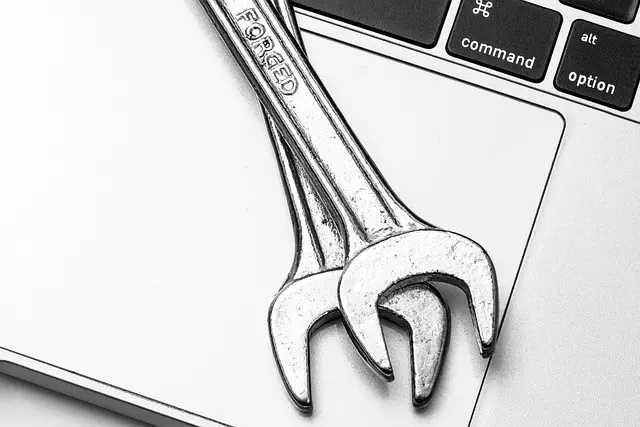Toledo faces prevalent sewer line damage from tree roots and harsh weather. Prompt action is key; advanced Sewer Line Repair Tools and Sewer Line Repair Methods, like camera inspections, hydrojetting, and relining, offer effective solutions. Modern technologies minimize disruption and enhance accuracy, with tailored applications for tree root intrusions or structural damage. Non-invasive techniques using fiber optics and high-pressure water jets are game changers, preventing future issues and restoring pipe integrity. Homeowners should avoid DIY repairs and stay updated on methods; regular maintenance, including clearing blockages and planting non-rooting plants, prevents long-term damage.
“Uncovering the hidden dangers of root damage to your sewer lines is a critical step in maintaining a smooth-running home or commercial property. In Toledo and beyond, understanding the common causes and effects of this issue is essential for homeowners and professionals alike. From identifying root intrusion to employing advanced repair tools and non-invasive techniques, this comprehensive guide explores effective sewer line repair methods. We’ll also delve into prevention strategies to safeguard your pipes from future damage.”
- Understanding Sewer Line Root Damage: Common Causes and Effects
- Assessing the Scope of the Problem: Identifying Root Intrusion
- Advanced Sewer Line Repair Tools: A Comprehensive Guide
- Step-by-Step Sewer Line Repair Methods for Effective Restoration
- Non-Invasive Techniques: Minimally Disruptive Root Damage Solutions
- Common Mistakes to Avoid During Sewer Line Root Repair
- Long-Term Prevention Strategies: Protecting Your Sewer Lines
Understanding Sewer Line Root Damage: Common Causes and Effects
Root damage in sewer lines is a common plumbing issue that requires prompt attention to prevent further complications. Toledo’s harsh climate and the presence of tree roots near underground pipes make it particularly susceptible to this problem. Trees, especially those with expansive root systems like maple, birch, and poplar, can intrude into sewer pipelines, causing blockages and severe damage over time.
The effects of root intrusion are multifold. Initially, roots may line the inside of the pipe, gradually narrowing it and slowing down water flow. This can lead to clogs, overflows, and even backups in homes and businesses. As roots grow and infiltrate the pipe, they can break through weak spots, causing cracks or holes that result in leaks. Over time, this deterioration can weaken the structural integrity of the sewer line, necessitating complete replacement if not addressed promptly with effective sewer line repair methods using specialized tools.
Assessing the Scope of the Problem: Identifying Root Intrusion
When it comes to assessing the scope of a sewer line root damage issue, identifying root intrusion is a critical first step in any effective repair process. This involves thorough inspection using specialized tools designed for sewer line repair in Toledo and beyond. Professionals employ state-of-the-art equipment like camera inspections, hydrojetting, and mechanical relining to visualize the extent of root infiltration.
Camera inspections provide real-time footage, allowing experts to pinpoint precisely where roots have invaded the pipe structure. Hydrojetting, a high-pressure water technique, helps clear obstructions and dislodge tenacious roots. Moreover, mechanical relining involves fitting a new liner inside the existing sewer line, repairing damage caused by root intrusion without excavation. These advanced sewer line repair tools and methods ensure minimal disruption to properties while addressing the problem efficiently.
Advanced Sewer Line Repair Tools: A Comprehensive Guide
In the realm of sewer line repair, technology has revolutionized the way technicians approach and solve problems. Advanced Sewer Line Repair Tools offer precise, efficient solutions for Toledo residents and businesses facing issues with their plumbing infrastructure. From high-tech cameras that inspect lines without excavation to advanced root cutting tools designed to navigate challenging debris, these innovations streamline the repair process.
Sewer line repair methods have evolved significantly, providing more effective and less disruptive options than traditional techniques. Modern tools not only enhance accuracy but also reduce costs and minimize downtime for clients. Whether dealing with tree root intrusions or structural damage, the right Sewer Line Repair Tools ensure comprehensive solutions tailored to specific issues.
Step-by-Step Sewer Line Repair Methods for Effective Restoration
When it comes to sewer line root damage repair in Toledo, understanding the right methods is key to effective restoration. The first step involves identifying the extent of the damage using specialized tools like cameras and locators to pinpoint the affected area. Once located, the next step is excavation—carefully digging around the damaged section to access the pipe. This allows for a thorough inspection to determine if the damage is confined or if further issues exist.
After excavation, the damaged portion of the sewer line is removed, and any roots or debris are cleared. The cleaned pipe is then assessed for repairs, which can range from relining the pipe with modern materials to replacing the entire section. Relining involves inserting a new, stronger liner into the existing pipe, providing a protective barrier against future root intrusion. Replacement ensures a fresh start, eliminating any weakened sections. Finally, once repairs are complete, the excavation is backfilled, and the area is restored, ready for testing to ensure the sewer line’s seamless functionality.
Non-Invasive Techniques: Minimally Disruptive Root Damage Solutions
In the realm of sewer line repair, non-invasive techniques have emerged as game changers, offering minimally disruptive solutions to the age-old problem of root damage. These innovative methods, popular in cities like Toledo, are transforming the way we tackle clogged and damaged pipes. Instead of traditional, costly, and invasive excavation, modern tools and technologies allow for precise and targeted repairs without disturbing the surrounding landscape.
Sewer line repair tools have advanced significantly, incorporating fiber optics, high-pressure water jets, and specialized chemical solutions. These methods not only restore the integrity of sewer lines but also help prevent future root intrusions. By employing these state-of-the-art Sewer Line Repair Methods, professionals can navigate through complex pipes, identify the source of damage, and implement effective repairs, ensuring a smoother, more efficient process for both residents and local governments.
Common Mistakes to Avoid During Sewer Line Root Repair
When it comes to sewer line root damage repair in Toledo, there are several common mistakes that homeowners and professionals alike should strive to avoid. One of the most frequent errors is attempting DIY repairs without the proper tools and knowledge. While some sewer line repair tools are accessible for homeowners, complex root intrusion issues often require specialized equipment and expertise. Using inappropriate tools can lead to further damage or an incomplete fix, exacerbating the problem.
Another mistake to circumvent is relying on outdated repair methods. With advancements in technology, new, effective sewer line repair methods have emerged. Traditional techniques might not address modern challenges, such as deep root systems or extensive damage. Staying informed about the latest sewer line repair tools and understanding the most current repair methods ensures a successful and long-lasting solution for Toledo residents.
Long-Term Prevention Strategies: Protecting Your Sewer Lines
To prevent long-term damage to your sewer lines, regular maintenance and prompt action upon noticing any issues are crucial. One effective strategy is to employ sewer line repair tools designed for clearing blockages and inspecting pipes. These tools, often utilized by professionals during sewer line repair in Toledo, can detect potential problems early on. By regularly scheduling professional inspections, you can catch root intrusions or other obstructions before they cause significant damage.
Additionally, property owners should consider planting only non-rooting plants near sewer lines and avoiding overwatering, which can lead to soil erosion and disturb the pipe’s integrity. These proactive measures, combined with timely sewer line repair methods, will contribute to extending the lifespan of your sewer lines and minimizing costly repairs in the future.


